Six of us arrived at the Diving Museum car park, Browndown on the south coast near to Gosport on Saturday 1 May 2021. Jan had a new dry suit he was trying out on his first sea crossing:
After launching, we head to Gilkicker Point quite quickly with the flow. Then cross the channel for Portsmouth Harbour between fast moving yachts and eastwards over to Spit Sands Fort. This is one of four circular forts built in the Solent as part of the Napoleonic defences in the 1870s, and known as a Palmerston Fort. Palmerston Forts can be found along the south coast (eg the round Martello tower at Seaview) and on the Isle of Wight (eg Sandown Fort, which was used to pump fuel to France as part of the D-Day landings, and now a zoo). All the Solent forts are quite an amazing feat of engineering to be built in the middle of the Solent with no nearby land. All four forts were bought from the government in the 1980s and Spit Bank Fort is now a hotel. Last year they all went up for sale. So if you’re interested, you can put in an offer for Spit Bank Fort, in the region of £4m.
Although not able to land, we circumnavigate the 62.5m diameter fort before heading to a buoy that marks the site of the sinking of the Mary Rose. As you will know, the Mary Rose was the premier battleship of the 1640s, and one of the first to have broadside cannons. She sank while becalmed during a battle with the French in 1645, when a strong gust caused the ship to lean over and allow water in through the gun ports. That flooded the ship almost immediately and caused the brick oven and cannons to break loose. More than 345 sailors died, many caught up in the anti-boarding netting. The ship was raised in 1982 in one of the biggest marine salvage operations of its time. Although the ship itself is now in a museum in Portsmouth attracting 200,000 people a year, the buoy is a very poor memorial, with even some letters rubbed off.
From the Mary Rose buoy, we head in a south easterly direction crossing the main channel to Portsmouth Harbour, over to Horse Sands Fort. Unlike Spit Sands Fort, Horse Sands Fort is derelict, or in estate agent language “preserved in its original state”, and yours for only £750,000. It is also at the end of an chain of submerged anti-submarine concrete blocks, part of second world war defences. Apparently those serving on the forts during the second world war were deliberately chosen for their inability to swim, to avoid any attempt to escape. As if to underline the continuing strategic nature of the port at Portsmouth, we see a Royal Navy ship pass by.
After the obligatory circumnavigation of the Horse Sands Fort we head in a south westerly direction to No Man’s Fort, a 23 bedroom hotel with a helipad (yours for only £4.25m), almost identical to Horse Sands Fort.
After lunch at Seaview on the Isle of Wight, the tidal stream changes direction and we head north westerly across the shipping channel to North Sturbridge buoy in the middle of the Solent. The wind picks up further to F4 and it starts to rain heavily, being driven into our faces for about 15 mins. There’s nothing else to do except keep going and head back to the launch spot.
The sun comes out as we arrive back in Browndown and we have some homemade macaroons supplied by Cathy, to celebrate a successful trip across the Solent and with a few historical sites along the way.


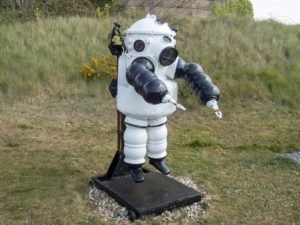
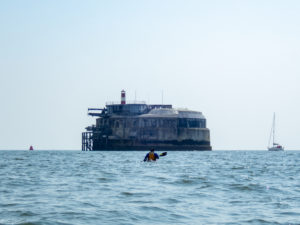
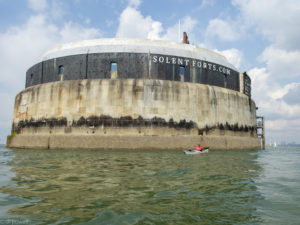
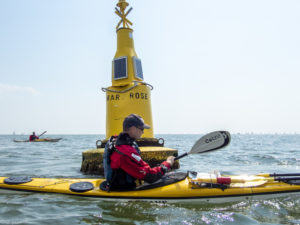
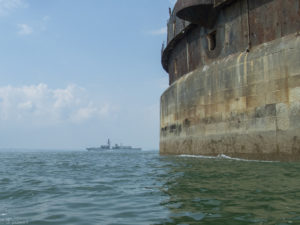
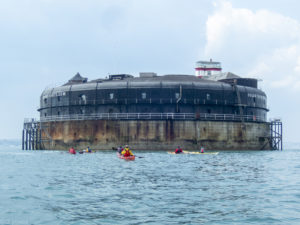
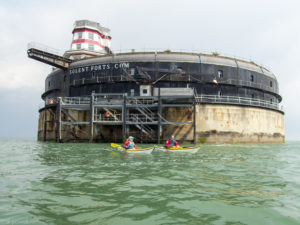
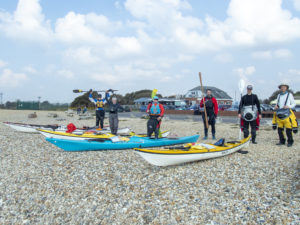

Leave a Reply